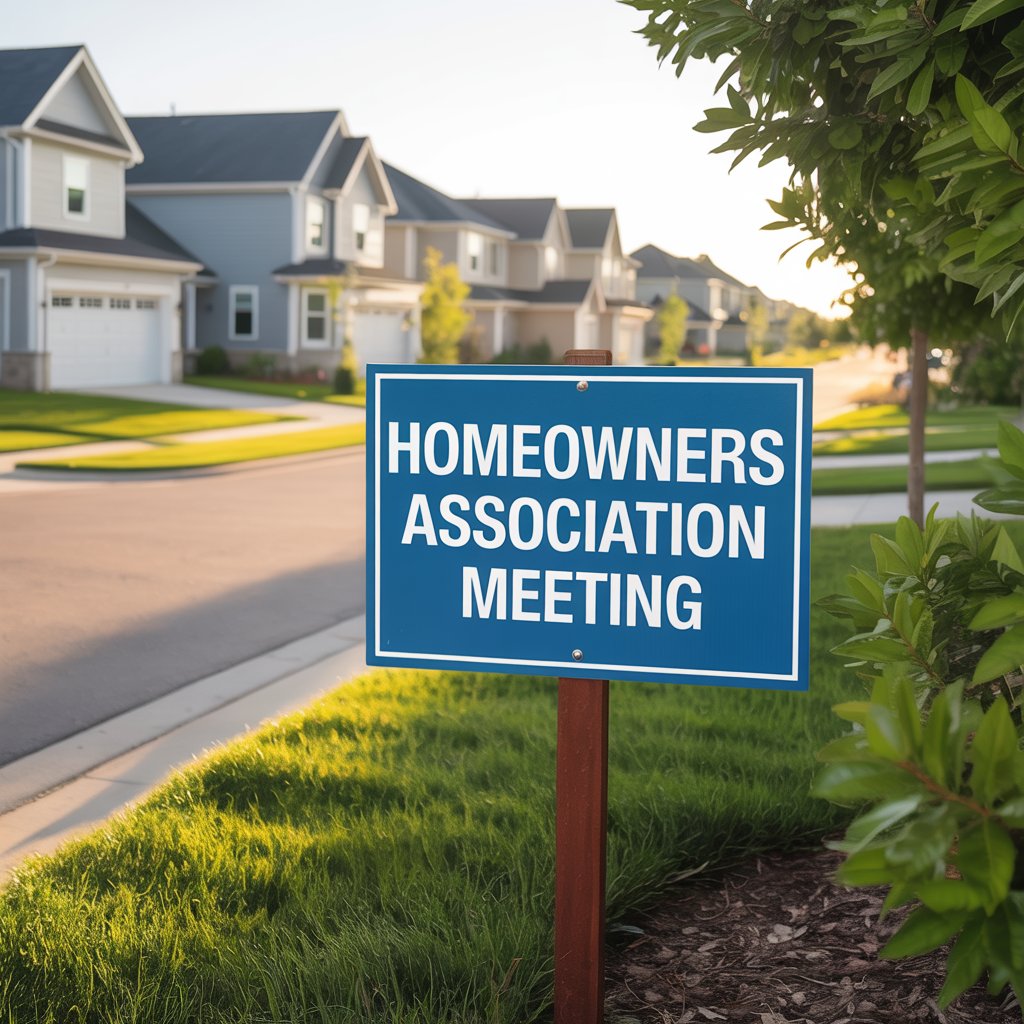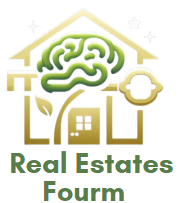Homeowners Associations (HOAs) have become an integral part of the American real estate landscape, yet they remain one of the most misunderstood and polarizing elements of property ownership. As a marketing director with 15+ years specializing in real estate, I’ve witnessed firsthand how HOAs can make or break a community’s appeal—and consequently, a property’s value.
Whether you’re a real estate agent trying to market condos in Florida, a developer planning a master-planned community in Texas, or a homeowner evaluating your neighborhood’s association, understanding the nuanced role of HOAs is essential. This guide will provide you with comprehensive insights that go beyond the typical “HOAs: love them or hate them” discourse, offering actionable knowledge to navigate this complex aspect of American real estate.

Understanding Homeowners Associations: The Foundation
HOAs represent more than just rule enforcement—they're the backbone of community identity
and value preservation in 74 million US housing units across neighborhoods nationwide.A Homeowners Association is a nonprofit organization created by a real estate developer for the purpose of managing and maintaining a community, enforcing rules, and protecting property values. Governed by Covenants, Conditions, and Restrictions (CC&Rs), HOAs collect dues from residents to fund community upkeep, amenities, and reserve funds. From quaint suburban neighborhoods to high-rise luxury condominiums, HOAs establish the framework that defines community life.
The governing structure typically consists of volunteer homeowners elected to the board of directors, though larger communities often employ professional management companies to handle day-to-day operations. While some view HOAs as restrictive, their primary mission remains consistent: to maintain standards that benefit all residents collectively. Understanding this foundational purpose is critical for real estate professionals seeking to accurately market properties within HOA communities.
“A well-managed HOA isn’t about restriction—it’s about preservation of the community’s character and investment value. The best associations function like invisible infrastructure; you only notice them when they’re not working properly.”
— Elena Rodriguez, President of the Community Associations Institute
How HOAs Impact Property Values Long-Term
When properly managed, HOAs serve as powerful engines for property value appreciation. Research by Cheung (2012) in Real Estate Economics confirms that homes within well-run HOAs typically appreciate 3-12% faster than comparable non-HOA properties, with the greatest benefits seen in communities with consistent standards enforcement and well-maintained common areas.
The Value Preservation Mechanism
Think of your neighborhood as a single, well-kept estate. Just as a nice house attracts buyers, a well-run community does too hoaunity.com. HOA management maintains this collective curb appeal through:
- Architectural control standards: Preventing incompatible modifications that could diminish neighborhood aesthetics
- Consistent maintenance: Ensuring all properties meet minimum upkeep requirements
- Amenity management: Properly maintaining pools, clubhouses, and common areas that serve as community assets
- Financial safeguards: Building reserve funds to address major repairs without sudden special assessments
Without this collective oversight, individual homeowner decisions could undermine the entire neighborhood’s desirability. One neglected property can trigger a domino effect that diminishes the appeal of surrounding homes—a phenomenon HOAs actively work to prevent.
| HOA Community Type | Average Appreciation Premium | Key Value Drivers |
|---|---|---|
| Planned Unit Development | 5-8% | Park spaces, consistent architecture |
| Condominium Complex | 3-6% | Shared amenities, exterior maintenance |
| Gated Community | 8-12% | Security, exclusivity, premium amenities |
| Traditional Subdivision | 4-7% | Curb appeal standards, neighborhood identity |
The Financial Reality of Value Protection
Pro Tip: When marketing properties in HOA communities, highlight the long-term financial protection rather than just monthly costs. Prospective buyers often fixate on dues but overlook how these fees prevent larger individual expenses and protect their investment.
HOAs maintain property values through systematic financial planning. According to the Community Associations Institute, communities with properly funded reserves (ideally 25-70% of recommended funding levels) experience 18% fewer value fluctuations during economic downturns compared to underfunded associations. This financial stability provides homeowners with confidence that their investment is protected against the unexpected.
Consider this scenario: When a community pool needs resurfacing, a well-managed HOA with adequate reserves can handle this $75,000 expense without burdening homeowners with special assessments. In contrast, communities without proper funding might delay maintenance until problems become critical, ultimately costing more and diminishing property appeal.
Behind the Scenes: HOA Management Operations
The Daily Responsibilities That Keep Communities Thriving
Professional HOA management companies serve as the operational engine that keeps communities running smoothly. These specialists handle everything from mundane administrative tasks to complex financial planning, allowing volunteer boards to focus on strategic decisions rather than day-to-day operations.
As Danielle McDonough of RowCal explains, “These companies specialize in understanding the roles, responsibilities, and daily operations of each HOA” rowcal.com. Their expertise ensures compliance with local regulations, proper financial management, and consistent enforcement of community standards.
The Critical Services They Provide
- Financial Management
- Budget preparation and monitoring
- Dues collection and payment processing
- Financial reporting to the board
- Vendor payment administration
- Reserve fund management
- Administrative Support
- Meeting coordination and minute-taking
- Document management and record-keeping
- Communication with homeowners
- Violation tracking and enforcement processes
- Insurance coordination
- Vendor and Maintenance Oversight
- Bidding out service contracts
- Supervising landscape maintenance
- Coordinating with architectural review committees
- Managing repair requests and emergency responses
- Overseeing capital improvement projects
Without this professional oversight, volunteer boards often struggle with the complexity of community management—particularly in larger developments where the scale of operations exceeds what volunteers can reasonably handle.
The HOA Board: Community Leadership in Action
Effective HOA boards blend volunteer passion with professional guidance to create
thriving communities where property values flourish and residents feel invested.Elected homeowners form the governance backbone of most associations, working alongside volunteers and sometimes professional managers to steer community decisions. As outlined by Neighborhood Online, boards “set and enforce community rules based on governing documents such as CC&Rs” while simultaneously “managing the association’s finances, including collecting dues and budgeting for maintenance” neighborhood.online.
This delicate balancing act requires understanding both big-picture strategy and granular community dynamics. Successful boards recognize that their decisions directly impact resident satisfaction, property values, and the community’s reputation in the broader real estate market.
Warning Signs of Board Dysfunction
The consequences of poor HOA management can be severe, potentially triggering “lawsuits and fines from noncompliance with governing documents or local laws” along with “special assessments to cover costs that result from mismanagement” kuester.com. Marketing professionals should be attuned to these red flags when positioning properties in HOA communities:
- Inconsistent rule enforcement creating resident tensions
- Chronic budget deficits requiring frequent special assessments
- Poor communication between board and residents
- Aging infrastructure without maintenance plans
- Legal disputes that remain unresolved for extended periods
When these issues arise, they don’t just affect current residents—they become part of the community’s narrative that future buyers will research carefully.
Marketing Properties in HOA Communities: A Strategic Approach
Selling homes within HOA communities requires a nuanced understanding that goes beyond listing square footage and bedroom counts. Savvy real estate marketers position HOAs as value-enhancing features rather than necessary evils.
Transforming Perceived Limitations into Selling Points
Begin by thoroughly understanding the specific HOA’s strengths. Does it maintain exceptional common areas? Does it have strong reserves that protect against future assessments? Does it enforce standards that preserve neighborhood character? Each of these represents a potential selling point when properly framed.
“The difference between an HOA that’s a sales obstacle and one that’s a value enhancer often comes down to how well its benefits are communicated to prospective buyers.”
— Michael Chen, Top Producing Realtor, Austin, TX
Instead of saying “HOA fees: $350/month,” position it as: “Includes premium landscaping maintenance, 24/7 security, and full access to the community’s resort-style pool, fitness center, and clubhouse—saving homeowners an estimated $4,200 annually in comparable standalone services.”
The Homebuyer’s HOA Evaluation Checklist
Educate your clients on what matters most when evaluating an HOA—this positions you as a knowledgeable advisor rather than just a salesperson:
Must-Review Documents
- CC&Rs (Covenants, Conditions, and Restrictions)
- Bylaws and articles of incorporation
- Current budget and reserve study
- Meeting minutes from the last year
- Violation history and enforcement policies
Critical Questions to Ask
- What percentage of reserves are funded?
- What special assessments have occurred in the last 5 years?
- How are rule violations handled (consistently or arbitrarily)?
- What major repairs are anticipated in the next 3-5 years?
- What’s the ratio of owner-occupied to rental units?
This information transforms abstract concerns into concrete evaluation criteria, helping homebuyers make informed decisions while positioning you as the expert who navigates complex aspects of real estate transactions.
Navigating Common HOA Challenges: From Conflict to Community
No HOA is perfect, and marketing properties in these communities requires addressing potential concerns head-on. The most common complaints—restrictive rules, high dues, and perceived mismanagement—can be reframed as opportunities to highlight the community’s strengths.
Turning Restrictions into Reassurance
When prospects complain about architectural controls, emphasize how consistent standards protect their investment. Instead of focusing on what they can’t do (like paint their front door an unconventional color), highlight what the rules prevent others from doing (like converting homes into noisy commercial spaces or letting properties deteriorate).
As Gordon and Gyourko (2018) noted in their housing market research, communities with well-enforced standards demonstrate greater long-term value stability spotblue.com. This academic backing provides concrete evidence to counter emotional objections to HOA rules.
Managing Dues Perception Strategically
Pro Tip: Always break down what dues cover using current local service costs. Showing that $300/month actually represents savings compared to paying for equivalent services individually transforms a perceived cost into a demonstrated value.
For communities with higher dues, develop a “value breakdown” that compares the cost of individual homeowners maintaining equivalent standards. Many buyers don’t realize that professional landscaping for a typical 0.25-acre lot averages $450/month, while HOA-maintained common areas might cost homeowners just $100 toward that same service through their dues.
The Future of HOAs in American Real Estate
As American communities evolve, so too do homeowner associations. The next generation of HOAs is becoming more resident-centric, technology-enabled, and flexible in their approach to community management.
Modern associations increasingly offer tiered membership options, digital communication platforms, and more transparent decision-making processes. The most successful new developments are designing HOAs that serve as community-enhancing frameworks rather than restrictive regimes—a shift that savvy marketers should highlight to appeal to contemporary homebuyers.
Conclusion: Positioning HOAs as Value Partners
Homeowners Associations remain a powerful force in American real estate, capable of significantly enhancing or undermining property values depending on their management. For real estate professionals, the key lies in understanding and effectively communicating the specific value proposition of each community’s association.
The most successful marketers don’t just acknowledge HOAs—they leverage them as community differentiators that protect and enhance client investments. By mastering the nuances of HOA operations, understanding the warning signs of dysfunction, and strategically framing community benefits, you position yourself as the knowledgeable advisor clients need in today’s complex housing market.
Whether you’re listing a home in an established HOA community or representing a buyer evaluating their options, remember: an informed perspective on homeowners associations doesn’t just facilitate transactions—it builds trust, establishes credibility, and ultimately serves your clients’ best interests in preserving and growing their most significant asset.
